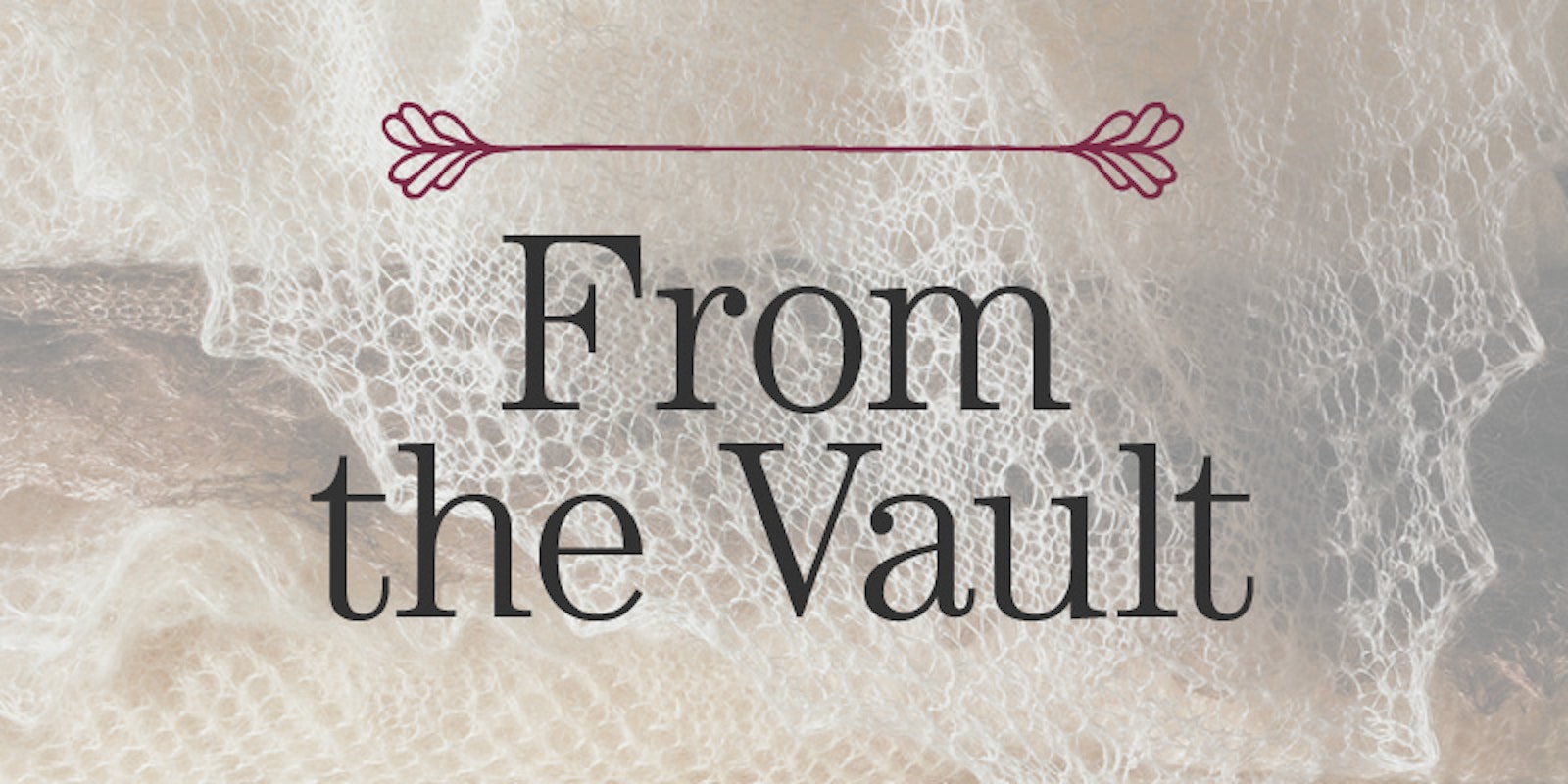I have to admit to a little gansey fetish. Their migration fascinates me. The complex simplicity of their stitch combinations appeals endlessly. I’ve admired gansey patterns and their stories for years, but when I learned about Orkney and Dutch gansey patterns, a whole new chapter opened up for me.
We are fortunate to be able to include in PieceWork’s Fall 2014 issue of Knitting Traditions two wonderful articles about Dutch and Orkney ganseys and four companion projects.

Fishermen from Pernis. The man on the left is wearing a Vlaardingen gansey with a cord threaded through the collar. Collection Historichse Vereniging Pernis, Pernis, The Netherlands.
Here’s an excerpt from Stella Ruhe’s article “Fisherman’s Bounty” about traditional Dutch ganseys:
Ganseys were first worn on trousers, similar to smocks. Because the trousers had a high front flap, the sweaters were relatively short. Later, the sweater was tucked into the trouser band. Ganseys were always quite tight-fitting—partly because they used to be worn as undergarments—and the collar, cuffs, and ribbing were knit tightly to prevent the wind from catching the garment, so that fishermen wouldn’t fall overboard, but also to prevent them from catching on to lines and hooks, which could be fatal at sea. The sweaters were also knit tight to create a dense, warm layer. This is also why patterns were used in the entire sweater or, if this was too costly, in the top half, to protect the chest and lungs. The sleeves were kept relatively short to keep the hands and underarms free and not get in the way during work. The salt water would also shrink the knit fabric and make the sleeves even shorter. Often, fishermen wore separate (sewed on) leather sleeve protectors. Some parts of the sweater, such as the elbows, would wear much quicker than other parts. The sleeves were knit from the top down, which made it easier to rip back the worn parts and re-knit the sleeves with new yarn. Usually, the yarn used to knit the sweater was no longer available, so the sleeves were knit in a different type of yarn, sometimes in a different color or thickness. Nobody minded because this was work gear!

The back of Jess's Cushion, inspired by stitch patterns from a gansey worn by a herring "gutter girl" on the Orkney island of Stronsay.
In many ganseys, you can see that fishermen threaded a cord or string through the collar. Elastic did not exist yet, and because of all the pulling on and off, the collar would start to stretch. To make sure the collar would fit closely, knitters would include a row of holes, halfway up the collar or close to the bind-off edge. A twisted cord would be threaded through, sometimes with tassels or pompoms at the end to prevent the cord from pulling out.

Heatherly Walker's Fritillary Mittens inspired by a design she found tucked into a nineteenth-century French embroidery book and named after the snake's head fritillary flower. Photo by Joe Coca.
And if you don’t share my gansey fixation (which I won’t believe!), you can enjoy articles in this issue about Civil War knitting, wool traditions of the Skolt Sámi people, a profile of Mademoiselle Elenonore Riego de la Branchardiere, and many others. Of course we’ve gathered an array of gorgeous projects including some knockout colorwork mittens, a christening set, and lace shawls.
Enjoy!
Karen

